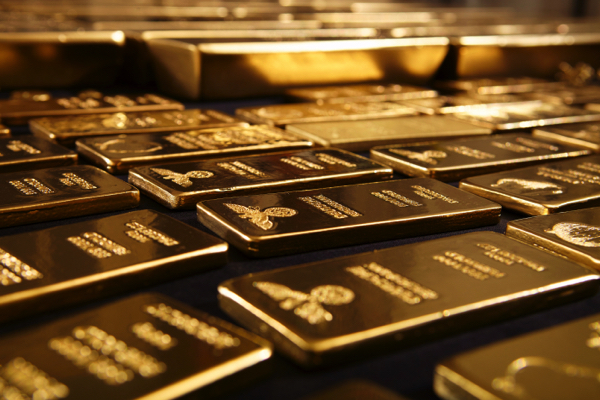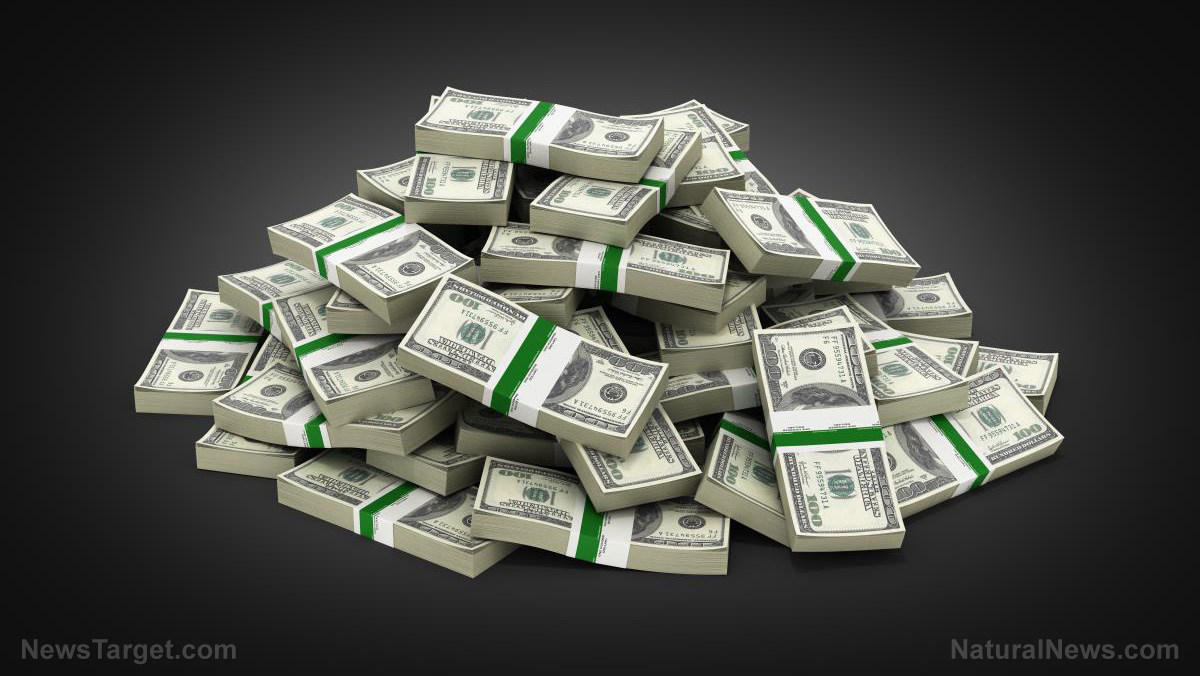 Parler
Parler Gab
Gab
- The price of gold is experiencing a significant surge, with analysts predicting it could reach $3,000 per ounce in 2025, driven by economic, geopolitical and market factors.
- Central banks worldwide, particularly developing countries like BRICS nations, are aggressively accumulating gold, with acquisitions topping 1,045 metric tons in 2024, fueling the gold rush.
- Inflation and the erosion of fiat currencies have increased gold’s appeal as a hedge against economic instability, with gold prices tripling since the 2008 financial crisis.
- Ongoing geopolitical tensions, trade disputes and a growing shortage of physical gold are driving demand and creating logistical bottlenecks, pushing prices higher.
- The possibility of the U.S. revaluing its gold holdings to reflect current market prices could inject nearly $1 trillion into the nation’s balance sheet and potentially stabilize its fiscal position.
Central banks fuel the gold rush
One of the most significant drivers of gold’s ascent is the aggressive accumulation of the metal by central banks worldwide. In 2024 alone, net central bank acquisitions of gold topped 1,045 metric tons, marking the third consecutive year of purchases exceeding 1,000 metric tons. This trend shows no signs of slowing down in 2025. The BRICS nations and other developing countries have led this gold-buying spree, while the United States and Western European nations like Germany, France and Italy have largely abstained. The reason? Crippling debt. With debt-to-GDP ratios well above 100 percent, these nations are forced to prioritize deficit financing over gold acquisitions. “The weaponization of the U.S. financial system, which began in earnest in 2022, has motivated many nations to diversify their sovereign holdings away from the U.S. dollar,” explains one analyst. “Gold has been the primary beneficiary.” This shift has not only bolstered gold prices but also weakened the U.S. dollar’s dominance in global markets.Inflation and the erosion of fiat currencies
Inflation remains a persistent thorn in the side of global economies. In the United States, January’s consumer price index (CPI) reading came in at 3 percent, with core inflation (excluding food and energy) even higher at 3.3 percent. Over the past three years, the general price level has risen by more than 20 percent, eroding the purchasing power of fiat currencies. Gold, by contrast, has proven to be a more honest representation of purchasing power. Since the 2008 financial crisis, the U.S. money supply has tripled, while the gold supply has grown by a mere 1 to 2 percent annually. Unsurprisingly, gold prices have tripled alongside the money supply, reinforcing its role as a hedge against inflation.Geopolitical tensions and supply shortages
Geopolitical instability is another key factor driving gold’s appeal. Ongoing conflicts, trade disputes and escalating tensions between global superpowers have created an environment of uncertainty. In such times, investors flock to gold as a safe-haven asset. Adding to the pressure is a growing shortage of physical gold. The London Bullion Market Association, the epicenter of global gold trading, has faced disruptions as nations repatriate their gold reserves from the Bank of England. This has led to logistical bottlenecks and speculation of price manipulation. “Demand for delivery of physical gold has skyrocketed,” notes one industry insider. “Geopolitical concerns have accelerated the movement of bullion out of the UK and Europe into vaults in New York and elsewhere.” This spike in demand, coupled with supply constraints, has created a feedback loop that could push prices even higher.The U.S. gold revaluation debate
A wildcard in the gold market is the possibility of the U.S. government revaluing its gold holdings. Currently, the U.S. gold stockpile is recorded on the books at a historical cost of just over 42 — a fraction of its current market value of nearly 3,000. Revaluing these holdings to reflect market prices could inject nearly $1 trillion into the nation’s balance sheet, potentially stabilizing its fiscal position. President Trump has committed to auditing the U.S. gold reserves for the first time in half a century. A successful audit could restore confidence in the U.S. financial system, while a shortfall could send shockwaves through global markets.What’s next for gold in 2025?
With central banks stockpiling gold, inflation showing no signs of abating, and geopolitical tensions simmering, the stage is set for gold to shine in 2025. Analysts from Goldman Sachs, Deutsche Bank and JPMorgan are all bullish on the metal, with price targets ranging from 2,725 to 3,000 per ounce. “Gold has delivered solid long-term gains and is up by more than 70 percent over the past five years,” says one market expert. “Its intrinsic value and role as a hedge against uncertainty make it a compelling investment.” For investors looking to capitalize on gold’s upward trajectory, now is the time to act. Whether through physical bullion, ETFs, or other investment vehicles, gold offers a unique opportunity to protect and grow wealth in an increasingly uncertain world. As 2025 unfolds, one thing is clear: gold’s glittering future is brighter than ever. Sources include: TheEpochTimes.com Money.com BullionExchanges.comExperts warn Zelensky may have to resign after disastrous meeting with Trump
By Cassie B. // Share
Chile declares emergency as massive power outage plunges nation into darkness
By Belle Carter // Share
Study confirms direct correlation between increased screen time and the risk of developing myopia
By Belle Carter // Share
New US sanctions on Russia take effect: Will they lead to de-escalation or further isolation?
By Lance D Johnson // Share
The government says money isn’t property – so it can take yours
By Willow Tohi // Share
Governments continue to obscure COVID-19 vaccine data amid rising concerns over excess deaths
By patricklewis // Share
Tech giant Microsoft backs EXTINCTION with its support of carbon capture programs
By ramontomeydw // Share
Germany to resume arms exports to Israel despite repeated ceasefire violations
By isabelle // Share










